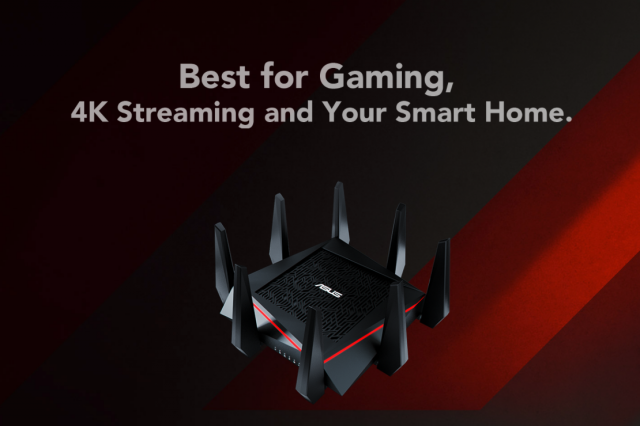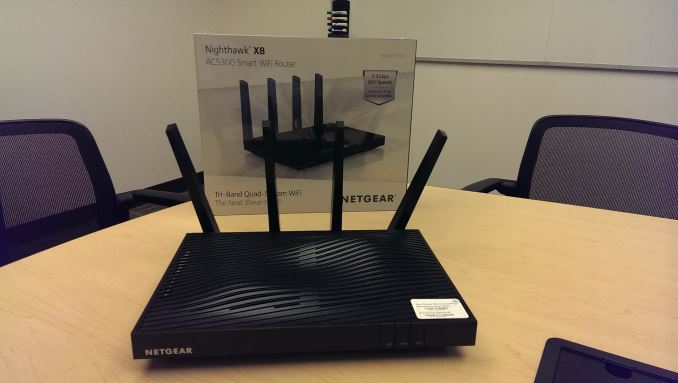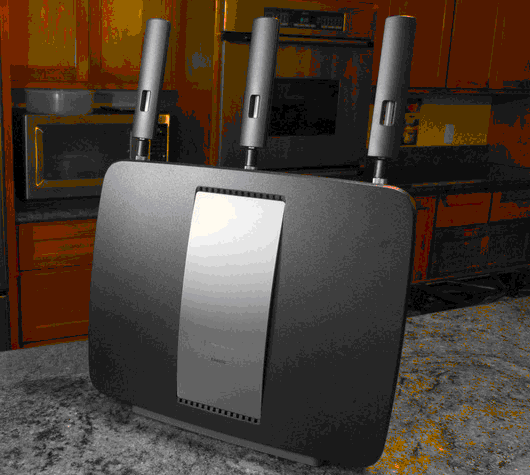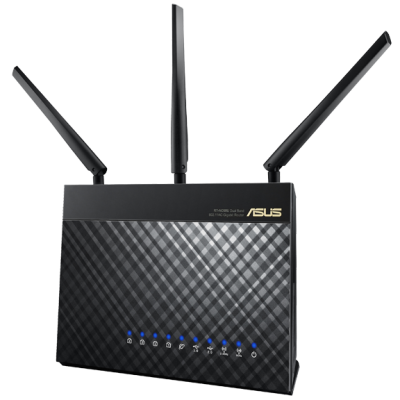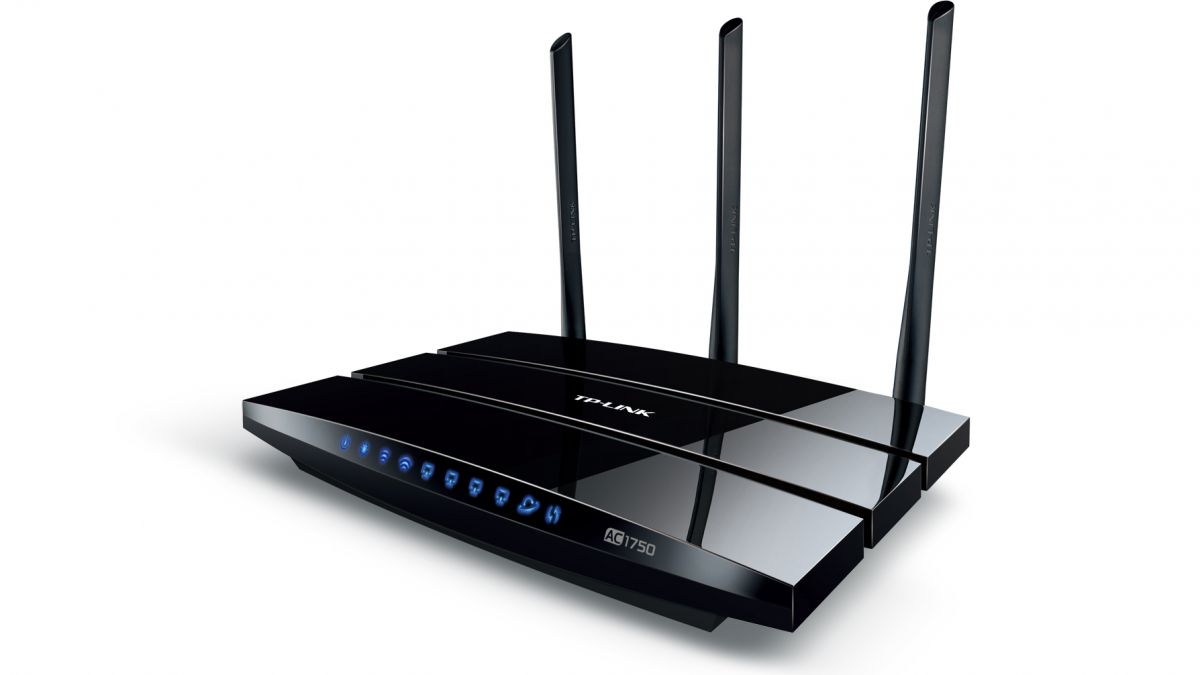With widely varying needs from one application to another, the users, who are in search for routers, seem to make one common basic error: They search for the best and the latest model without realizing the fact that there is no single product that will meet everyone’s needs.
The ideal choice is not the same for all. A stellar product that meets certain users’ needs could be a disaster for others with completely different set of requirements.
[toc]This is the reason why this page was born! We would like to list some very simple rules that can help those faced with choosing a new wireless router. The first, we’ll recommend you some great routers to choose:Best Wireless Router recommendation:
1, AC5300 Wireless router
My recommendation: ASUS RT-AC5300
(Fastest Wireless Router and Best choice for gaming)
This new router, ASUS RT-AC5300, incorporates simultaneous triple band for maximum wireless performance as does the RT-AC3200.
The main feature of this new router is that it incorporates triple simultaneous band with Wi-Fi AC. On the 2.4 GHz band, we can achieve speeds up to 1.000 Mbps, thanks to its four antennas in MIMO 4T4R configuration and NitroQAM technology that uses 1024QAM (or Quadrature Amplitude Modulation). As a result, this router will attain the maximum speed on this band. Regarding the 5 GHz band, it has two radios to broadcast in both 5 GHz bands (higher and lower channels as we have seen in the ASUS RT-AC3200 router, it uses a tri-band router) and can achieve a maximum speed of 2165 Mbps (by frequency band). We owe this level of performance to its four antennas in MIMO 4T4R configuration and 1024QAM frequency modulation. In addition to these features, it also incorporates the MU-MIMO technology in order to optimize the speeds of fast clients in conjunction with slow clients.
Therefore, we will have a 2.4 GHz band with 1.000 Mbps, a 5 GHz band with 2.165 Mbps, and another 5 GHz band with 2.165 Mbps. This makes it an AC5300 Wi-Fi and MU-MIMO compatible device that includes eight external antennas and dual band for providing the best possible coverage.
The other specifications are typical of high-end routers, which incorporate a Gigabit Ethernet port for WAN and four Gigabit Ethernet ports for LAN. It also includes NAT hardware as its main CPU. Furthermore, the new ASUS RT-AC5300 features an USB 2.0 port for sharing printers or connecting 3G/4G modems. In addition, it incorporates an USB 3.0 port for maximum speed with which we can share multimedia content or large files via an external hard drive or other removable storage devices.
Hardware Features
This device uses the latest chipset with Broadcom platform and has a CPU Broadcom BCM4709 as its main processor. But, we don’t know if it will be the latest revision of BCM47094 that we had discussed earlier, probably, because at least the Wi-Fi chipset itself is the latest revision of the popular 4360.
The ASUS RT-AC5300 incorporates 256 MB of DDR3 RAM to provide high capacity and speed in dealing with all processes and 128 MB of FLASH memory being used for firmware upgrades and storing its own essential firmware files.
As for the components of the radios, it incorporates the Broadcom BCM4366 for the three radios (both 2.4 GHz and 5 GHz radios). Obviously, different wireless amplifiers are used in the 2.4 GHz and 5 GHz bands.
>>Read More information and User Reviews on Amazon<<
Nighthawk X8 (R8500) AC5300
(Fastest Wireless Router)
The WiFi router industry recognizes the XStream platform from Broadcom as a popular option for home internet use. Although the first generation setup lacked MU-MIMO support or Wave 2 features, the second generation added these capabilities into the Netgear Nighthawk X8 (R8500) model. Its 160 MHz channels also transfer at wireless speeds of 5.3 Gbps and better. This leads Broadcom to claim their newest router to be faster than any other ones currently available.
The Nighthawk X8 uses 802.11ac Wave 2 network specs, which gives it plenty of power to provide quick, smooth Wi-Fi Internet access to large families who all like to be online at the same time. Netgear supports the idea that the Nighthawk was designed for just this purpose. With the 1.4 GHz dual-core processor and three quad stream Wi-Fi bands, this router has enough power to support such environment. This router also has 6 GB Ethernet ports. If you require more speed, two of these can be combined as well. With all this power and capabilities, the Nighthawk has no problem with 1024 QAM and several input and output options at once (MIMO).
One of the most obvious differences between the Nighthawk X8 and other XStream Gen 2 router options is the number of antennae outside the box. While others have eight externals, the R8500 only has four. There are actually more inside as well. Something else that makes these antennae unique is that they are all active, which is the first in the router industry. Active antennae have Wi-Fi amplifiers at the tips instead of being tucked neatly away inside on the motherboard. This is an exceptional option for multiuse Wi-Fi because it reduces loss of information between each antenna and the motherboard as well as preventing possible cross-signals.
Besides the normal GbE WAN port, the R8500 offers six LAN ports as well. Two of them have 802.3 AD dynamic link aggregation support, so the users can simply plug in the wires of their supported devices, like some ReadyNAS options, where all configurations will be completed automatically. This means that you can set up the network to include wired machines plus multiple wireless users all getting 1 GB plus of streaming speed from the NAS.
With all these capabilities and power, the Nighthawk X8 does not come cheap. Currently, it is available at most computer superstores and other retailers, so it is worth a look especially for large families who like to stay connected at the same time. For sheer speed and reliability, this Netgear R8500 option can’t be beat.
>>Read More information and User Reviews on Amazon<<
The comparison of AC5300 Wireless router:
| Models | ASUS RT-AC5300 | Nighthawk X8 |
| Picture | 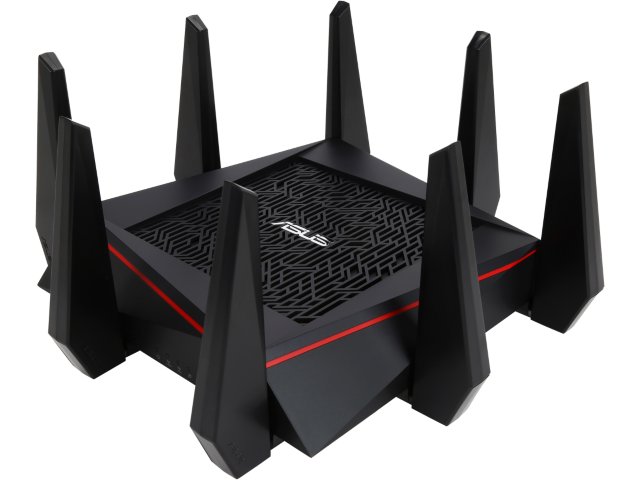 |
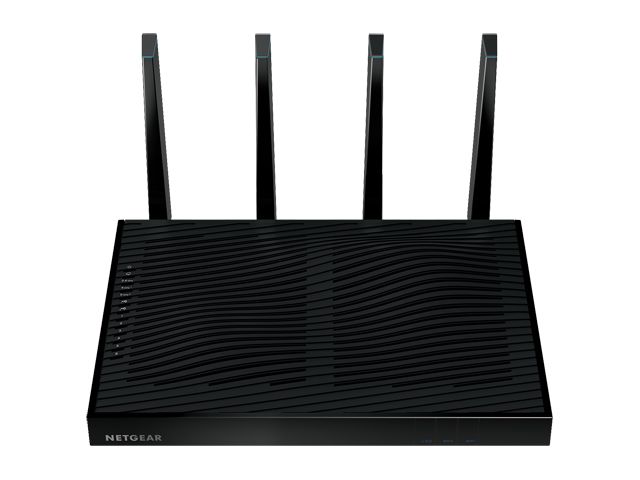 |
| Technology | 802.11ac | |
| Wi-Fi Max Speed | 2x5GHz: (2,167M + 2,167 Mbps) 2.4GHz:1,000Mbps |
|
| Processor | Broadcom BCM47094 1.4GHz, Dual-Core | |
| Ram | 512 MB | |
| Flash | 128 MB | |
| Port | 1 x USB 3.0 1 x USB 2.0 4 x LAN ports 1 x WAN ports |
|
| Switch | Realtek RTL8365MB or in BCM4709C0KFEBG | |
| Active Antennas | 8 Antennas | 8 Antennas:4 External, 4 Internal |
| More information on Amazon | More information on Amazon | More information on Amazon |
2, AC3200 Wireless Router
My recommendation: Linksys EA9200 Tri-Band router -AC3200
(Best value for money and Great for Gaming)
For home and small business use, the Linksys EA9200 Tri-Band router by its power and consistent speed for simultaneous use by many different computers and devices. The modern family home may have multiple desktops, laptops, smart phones, game systems and other wireless devices online at the same time. This Linksys router should be at the top of your consideration list.
The Linksys EA9200 uses one 2.4 GHz band and two 5 GHz bands to provide speeds of up to 3200 MB per second. This gives the model the AC3200 designation. Its speed is powered by a 1 GHz dual core processor and the router has an Internet port, 4 GB ethernet ports and one each of USB 2 and 3 ports.
One of the things that makes this Linksys router so powerful is the Smart Connect technology that seeks out the best band for each computer or mobile device automatically. The 802.11ac specification also indicates that this router uses beamforming. This means that the wireless signal is not spread broadly in hopes of finding a wireless client, but is instead directed straight for it. This makes the signal stronger and helps to minimize possible interference.
Home users who play the latest online games, stream videos or use cloud computing to store files will appreciate Linksys’s AC 3200 Tri-Band Gigabit Smart EA 9200 router. The included 802.11ac technology means quicker transfers because the wireless signals are automatically directed to bands that deliver the best speeds and connectivity. With quick NAS speeds and a very fast 5 GHz throughput performance, this router delivers everything you need for home Wi-Fi. Although signal strength does diminish further away you get from the machine, its power is still considerable. Prices are coming down for the EA9200, so it is an excellent time to upgrade your existing router to this more powerful option.
>>Read More information and User Reviews on Amazon<<
The comparison of AC3200 Wireless router
| ASUS RT-AC3200 | NETGEAR Nighthawk X6 | D-Link AC3200 Ultra | Linksys AC3200 | TP-LINK AC3200 | |
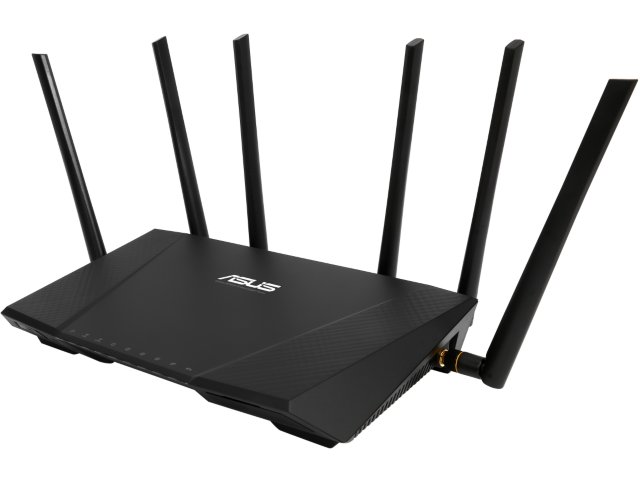 |
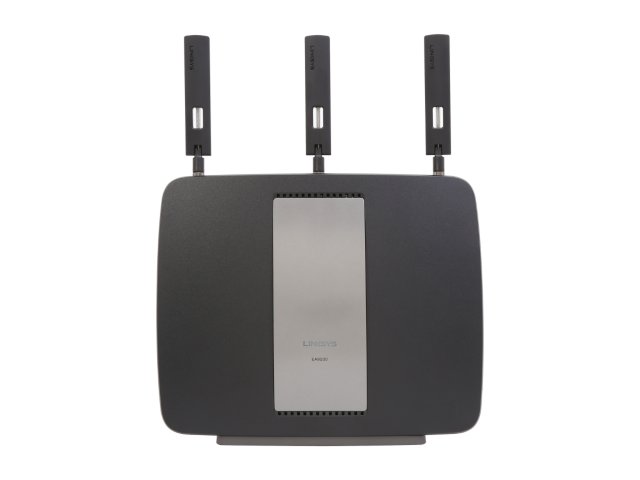 |
||||
| Technology | 802.11ac | ||||
| Wi-Fi Max Speed | 2.4GHz (600Mbps) 2 x 5GHz (1300Mbps + 1300Mbps) |
||||
| Processor | 1GHz dual-core Broadcom BCM4709A | ||||
| Ram | 256 MB DDR3 | 256 MB DDR3 | 512 MB | 256 MB DDR3 | 256 MB DDR3 |
| Flash | 128 MB | ||||
| Switch | In BCM4709A | ||||
| Wireless chipset | Broadcom BCM43602 | ||||
| Port | 1 x USB 3.0 1 x USB 2.0 4 x LAN ports 1 x WAN ports |
||||
| Active Antennas | 6 Antennas | 6 Antennas | 6 Antennas | 6 Antennas: 3 External, 3 Internal | 6 Antennas |
| More information on Amazon | More information on Amazon | More information on Amazon | More information on Amazon | More information on Amazon | |
3, AC1900 Wireless Router
My recommendation: ASUS (RT-AC68U) Wireless-AC1900
(Great Choice for Most User)
Asus’s RT-AC68U comes highly recommended for consumers looking for an 802.11ac router option. It’s not only provides an excellent range of use, but high speeds, multiple unique features particularly suited for small business application and an overall attractive look. If you have existing 802.11ac options but do not get the coverage or speeds that you want, the RT-AC68U should be investigated as a possible upgrade.
The router is powered by a broadcom wireless controller with TurboQAM boost, which gives it transfer speeds of 600 MB using the 2.5 GHz band and 1300 MB on the 5 GHz option. The multiple USB ports allow for external hardware such as printers, smart phones and other mobile devices to be used to bridge gaps in case of connection failure.
All the router is excellent straight out of the box, people with more knowledge of setting up networks have options with this Asus model. Unlike other consumer options, the RT-AC68U has a full VPN server included rather than support for VPN pass-through. The 2.4 GHz and 5 GHz bands both offer the option of setting up three possible guest networks on each.
We do not hesitate to recommend the Asus RT-AC68U as an all-around home and small business router option. For the non-techie user, set up is quick and easy and provides powerful Wi-Fi for streaming videos, uploading pictures, cloud sharing and other regular home PC use. For companies and technologically inclined individuals, the advanced features provide many possibilities for optimizing function and use. Asus’s RT-AC68U provide speed, clarity and power for many smaller applications.
>>Read More information and User Reviews on Amazon<<
The comparison of AC1900 Wireless router:
| NETGEAR Nighthawk AC1900 | ASUS (RT-AC68U) | Linksys MAX-STREAM AC1900 | TP-LINK AC1900 | Tenda AC15 AC1900 | |
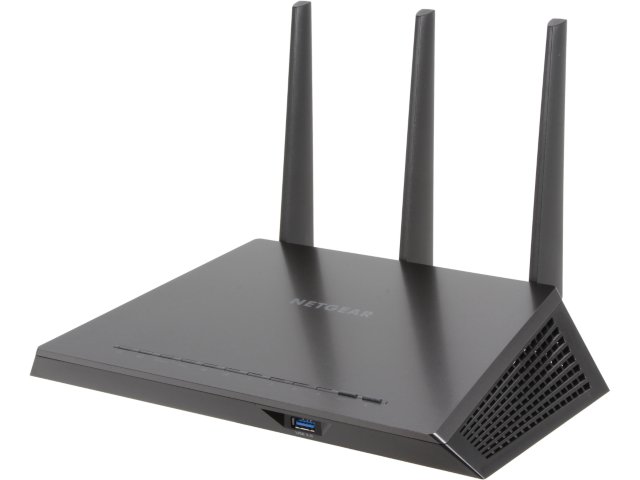 |
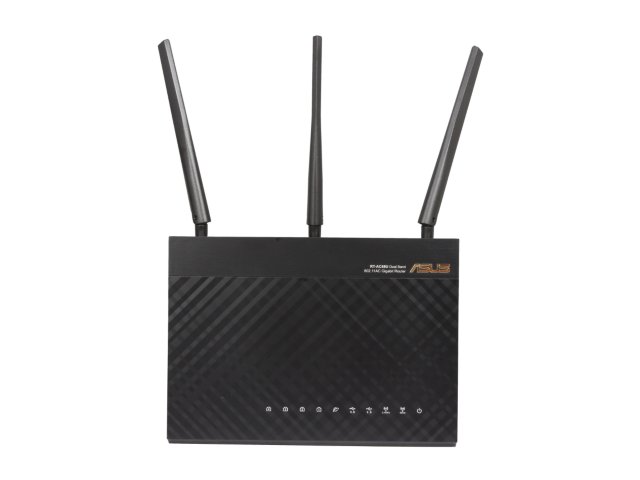 |
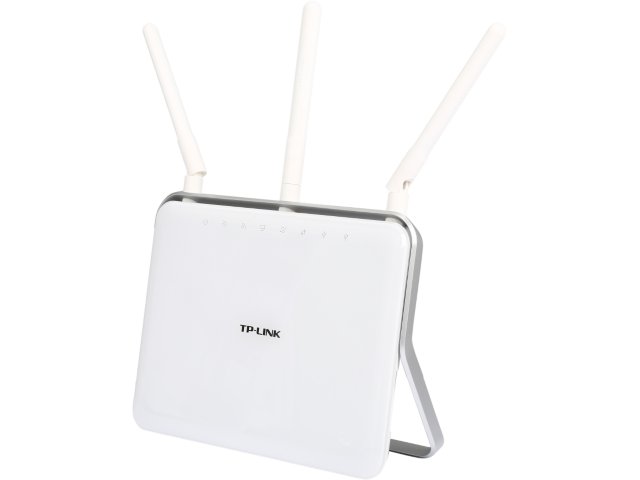 |
|||
| Technology | 802.11ac | ||||
| Wi-Fi Max Speed | 2.4GHz (600Mbps) 5GHz (1300Mbps) |
||||
| Processor | Broadcom BCM4709A (Dual-Core, 1GHz) |
Broadcom BCM4708A (Dual-Core, 800Mhz) | Qualcomm dual-core IPQ8064 (Dual-Core, 1.4GHz) | Broadcom BCM4709 (Dual-Core, 1GHz) | Broadcom BCM4708A (Dual-Core, 800Mhz) |
| Ram | 256MB | 256MB | 256MB | 128 MB | 256MB |
| Flash | 128MB | 128 MB | 128MB | 16 MB | 16 MB |
| Switch | in BCM4709A | In BCM4708A | Qualcomm Atheros QCA8337 | In BCM4709 | In BCM4708A |
| Wireless chipset | 2.4 GHz Radio: Broadcom BCM4360 5 GHz radio: Broadcom BCM4360 |
2.4 GHz Radio: Broadcom BCM4360 5 GHz radio: Broadcom BCM4360 |
2.4 GHz Radio: QCA9983 5 GHz radio: QCA9982 |
2.4 GHz Radio: Broadcom BCM4360 5 GHz radio: Broadcom BCM4360 |
2.4 GHz Radio: Broadcom BCM4360 5 GHz radio: Broadcom BCM4360 |
| Port | 1 x USB 3.0 1 x USB 2.0 4 x LAN ports 1 x WAN ports |
||||
| Active Antennas | 3 Antennas | ||||
| More information on Amazon | More information on Amazon | More information on Amazon | More information on Amazon | More information on Amazon | More information on Amazon |
4, AC1750 Wireless Router
My recommendation: TP-LINK Archer C7 Wireless Router – AC1750
(Best value for money)
It is not the world’s fastest Ac router but at this time given the not so widespread circulation of the devices that can take advantage of the AC technology it is certainly not the speed to be decisive in the case. Its 1300Mbps are enough for most users, however we would like to dwell on the decision to dedicate the external antennas to the 5GHz band while leaving to the internal ones the management of the 2.4 GHz band.
Probably with this choice it was intended to overcome the lack of capacity of the 5GHz band over long distances, giving maximum power to exploit, within the widest possible range, the great speed of transmission of this band, everything makes sense since those who choose an AC router have to exploit the fastest band. Looking at the other side of the coin our impression is that the 2.4GHz band suffers slightly from such a choice resulting in less efficiency over long distances than we would have expected.
The price is great as it often happens when there is half the TP-Link.
USB ports are the old 2.0 type and they do not support internet sticks, while they allow the sharing of hard drives and printers.
Inevitable the 4 Gigabit ports with the addition of a WAN to connect the external modem, they are necessary since this router has one.
It allows the setting of the network for guests on both bands.
It supports Internet Protocol IPV6, has parental controls. It supports dynamic dns through DynDns, ComExe, No-IP.
Aesthetically it is not unpleasant although in a competition of elegance it would instantly lose to competing products, however it has its 3 5dBi antennas dedicated to 5GHz band, its best quality.
To whom we recommend it: to those who have an average or small home and want an AC router with an excellent value for money.
The reason is that the 5GHz band appears to be more powerful than usual but in any case the inherent characteristics of this technology will not be able to penetrate several walls, at the same time its 2.4GHz band whose job is also to reach areas where the 5GHz inherently fails to arrive, does NOT give the impression of being ideal for vast homes.
>>Read More information and User Reviews on Amazon<<
The comparison of AC1750 Wireless router:
| NETGEAR AC1750 | TP-LINK C7 AC1750 | Linksys AC1750 | ASUS RT-AC66U | D-Link AC1750 | |
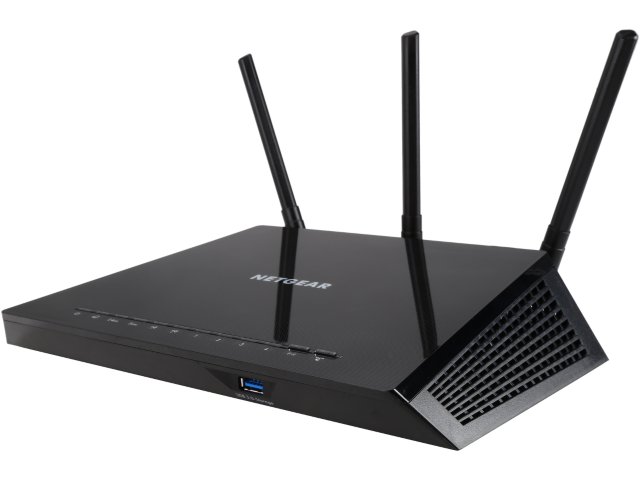 |
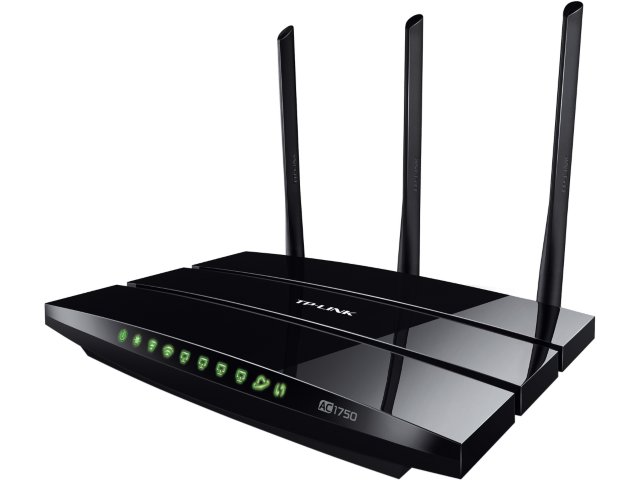 |
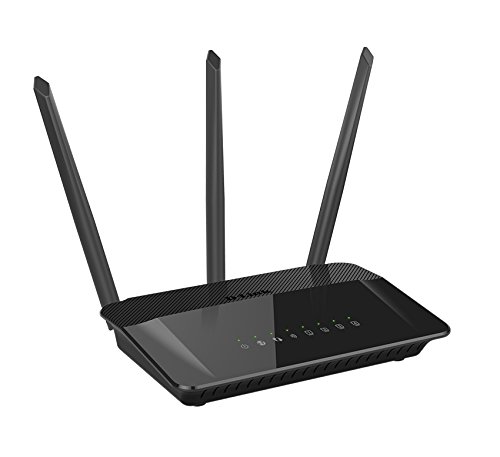 |
|||
| Technology | 802.11ac | ||||
| Wi-Fi Max Speed | 2.4GHz (450Mbps) 5GHz (1300Mbps) |
||||
| Processor | Broadcom BCM4708(Dual-Core, 800Mhz) | QCA9558 dual-band(Single-core, 720Mhz) | Broadcom BCM4708(Dual-Core, 800Mhz) | Broadcom BCM4706(Single-Core, 600Mhz) | Qualcomm Atheros QCA9563 (Single-core, 750 MHz) |
| Ram | 256MB | 128 MB | 256MB | 256MB | 128MB |
| Flash | 128MB | 16 MB | 128MB | 128MB | 16 MB |
| Switch | In BCM4708 | Atheros AR8327 | In BCM4708 | Broadcom BCM53125 | Atheros AR8337N |
| Wireless chipset | 2.4 GHz Radio: BCM4331 5 GHz radio: BCM4360 |
2.4 GHz Radio: QCA9558 5 GHz radio: QCA9880 |
2.4 GHz Radio: BCM4331 5 GHz radio: BCM4360 |
2.4 GHz Radio: BCM4331 5 GHz radio: BCM4360 |
2.4 GHz Radio: QCA9563 5 GHz radio: QCA9880-BR4A |
| Port | 1 x USB 3.0 1 x USB 2.0 4 x LAN ports 1 x WAN ports |
2 x USB2.0 4 x LAN ports 1 x WAN ports |
1 x USB 3.0 1 x USB 2.0 |
4 x LAN ports 1 x WAN ports |
4 x LAN ports 1 x WAN ports |
| Active Antennas | 3 Antennas | 3-External + 3-Internal | 3 Antennas | 3 Antennas | 3 Antennas |
| More information on Amazon | More information on Amazon | More information on Amazon | More information on Amazon | More information on Amazon | More information on Amazon |
The Main Features to consider when you’re about to choose a WiFi router?
To select a powerful WiFi router, replacing the older and not even working properly anymore one, you just have to examine the technical features and keep in mind a few important concepts.
1, WIFI power: The coverage area of your WiFi.
The first thing to consider is where you are going to use the router (home or office). If the area to be reached is particularly wide, has many signal interfering obstacles (walls or partitions, ceilings, floors, etc.) then we prefer a router that offers excellent coverage. Typically, the most recommended routers will have external antennas, excellent signal amplifiers, along with a technology to optimize signaling.
2, Supported WiFi standards
With the sign IEEE 802.11 it’s usually defined the wide totality of standards for data transmission on wireless networks (WLAN). The 802.11 group is composed of five standards dedicated to information transmission: more popular are a, b, g, n, ac.
Routers that are a little older, support 802.11 standards only up to “g”. IEEE 802.11g, actually, was approved during 2003 and let you reach a theoretical speed of 54 Mbps.
802.11N, instead, is supported by most recent routers (the definitive version of this standard was approved in 2009). In theory the data transmission speed offered by the 802.11n standard should be 300Mbps. Some predictors, by using the MIMO technology (multiple-input multiple-output) offer even higher speeds. By using more than one antennas to transmit and receive, the available bandwidth gets increased as much as many routers 802.11g on the market nowadays, say they offer a 450 Mbps speed.
Moreover, while older WiFi standards (802.11b/g) work only around 2,4 GHz, 802.11n let you work at 5 GHz.
In the Is there any difference between 2,4 GHz and 5 GHz WiFi? we’ve illustrated how useful is to activate WiFi up on 5 GHz, rather than more usual 2,4 GHz. The choice is usually driven by the need of selecting less “congested” frequencies, especially in higher population density areas.
The 802.11ac standard is much more recent (finalized during 2013) and it only uses bandwidth on 5 GHz. Router supporting 802.11ac standard have full compatibility with older standards as well.
802.11ac gets usually defined with a 1300 Mbps speed, about three times better than 450 Mbps of the 802.11n.c one.
Just like the 802.11n, however, it’s always about theoretical speeds referred, above all, to a data transmission done between devices belonging to the same local network. Even the fastest fiber connection (100 Mbps), in fact, cannot offer that bandwidth.
802.11ac extends 802.11n’s concepts, offering an higher bandwidth and the use of multiple spatial MIMO streams (up to 8). Each antenna could manage over 400 Mbps and lately, most expensive devices producers started using more than 4 antennas.
We must say that the advantages of 802.11ac and enjoyable if and only if not only the router supports that recent standard, but also other devices are compatible like that.
Moreover, let’s say you have an 802.11ac router and any other WiFi device that supports that standard. If the router was equipped with four antennas, while the device has only one (just like the smartphones) the max reachable speed, in theory, will be of 400Mbps, but the more realistic one will be 200 Mbps.
If you’re not using any 802.11ac client device, using that standard is pretty useless and counter-productive.
3, Dual-band or Tri-Band support
As i said in the previous point, some routers are dual-band, it means they can spread the WiFi signal whether on 2,4 Ghz and 5 GHz. Most recent routers let you eventually keep enables both the Wifi’s, 2,4 GHz and 5 GHz.
You can, obviously, disable a network and keep the other one enabled.
Usually, the activation of each WiFi network is confirmed by the two specific icons (led) on the front side of the router.
Inside the administration panel of the router (usually accessible by typing, in the web browser, the address http://192.168.1.1 or http://192.168.0.1), the two WiFi networks, 2 GHz and 5 GHz, are manageable like two separated networks.
Each one gets assigned a specific name (SSID), a protection algorithm (such as WPA2/AES), a password and so on.
Usually, the activation of a WiFi on 5 GHz is done only in high population density areas, where there are many WiFi networks working on “typical” 2,4 GHz.
The frequency bands on 5 GHz let you reach an higer throughput (bytes transmitted per unit of time, measured by defined ranges) but you’ll get a reduction of the coverage range and more difficulty in overcoming obstacles. compared to the 2,4 GHz signal.
In the article What’s the difference between WiFi 2,4 GHz and 5 GHz? we’ve cleared up the differences between using 2,4 GHz and 5 GHz when setting up a WiFi network.
Some more advanced and expensive routers support the tri-band. The let you use three different WiFi bands to connect multiple devices to the network, without any performance reduction. Usually these kinds of router are able to create one 2,4 GHz WiFi and two 5 GHz WiFi.
Some producer sums up the maximum theoretical bandwidth of each WiFi, and talks about over 3000 Mbps. Actually this operation is not really too correct, since each network works autonomously.
4, Number of antennas
When you need to choose a router, an important thing you have to consider is the number of the antennas it is equipped with.
You want to choose a router with external antennas that are, if possible, disconnectable in order to replace them; or another good feature would be a connector in which the user could plug a cable to transmit the signal somewhere else. Related to this, I suggest the following articles:
A router antenna, as illustrated in the previous articles, is omnidirectional by default. This means that the signal gets 360° transmitted, in a spherical form.
If the router must serve more than one floor of a building, we suggest to set it up in the center of the building, on the middle floor. This way, usually, you should get the maximum possible covering.
Never set up a router in basements or places with any kind of obstacle, which the signal cannot pass through, or just does it pretty hardly. Concrete walls, plasterboard partition walls, geographic maps, papers and boards and metal elements have an high level of absorption and are the main obstacles for a correct wireless signal spread.
When it’s about the most common 802.11n MIMO routers, the three antennas should be placed this following way: the central one vertically, the side ones bent to right and left by 45°. Even if they’re omnidirectional antennas, actually, the signal intensity is higher in the radial direction.
The antennas that cannot be disconnected from the router are indicated in the specs as fixed, while the removable ones as detachable.
5, CPU and RAM: How much processing power do you need?
If you use a router for using a few devices to surf the net, the power needed by a router is practically zero. However, if more devices are attached to use the internet for the purpose of browsing, streaming videos, using p2p programs, or connecting media server to TV, gaming console, family mobile phones, surveillance cameras etc., you will need a router with a powerful CPU and large RAM. A simple discrete router will not be an optimal choice in such environment. These features are highlighted in the table of the best and the individual reviews for reference.
6, Enabling WiFi guest networks
Some routers offer the possibility to enable “guest” WiFi networks, accessible by potential “guests”. These networks make the communication of the password to third parties possible, without revealing the main network’s one, used for work or personal purposes.
By accessing the “guest” WiFi network, guests can’t, for example, either reach systems connected to the same local network or try to access the resources shared by LAN.
Most advanced routers let you activate, on the “guest” network, the client systems’ activity log too.
7, Number and presence of Gigabit Ethernet ports
Another important parameter to consider when choosing a powerful WiFi router, consists in examining how many Ethernet ports are installed on the back of the device. If their number is poor, you can eventually consider to start using a switch later on. If the router’s ports are Gigabit Ethernet, the ones of the switch must be that kind too.
As an evolution of the Fast Ethernet protocol, working at 100 Mbps, Gigabit Ethernet let you transfer data, by cable, up to a 1000 Mbps (1 Gbps) maximum speed. If you’re expected to perform heavy data transfers locally, then you should consider to purchase a WiFi router equipped with Gigabit Ethernet ports. In the router’s specs, the 10/100 Mbps indication refers to a standard router withFast Ethernet (not Gigabit Ethernet) ports, while 10/100/1000 Mbps indicates the presence of Gigabit Ethernet ports.
8, Presence of a DSL modem
A fundamental feature to consider If you’re choosing a router that must work as a DSL modem too, is this last one’s presence.
If the presence of an xDSL modem is a condicio sine qua non (something that is indispensable), you must look through the DSL Modem/router category in producers catalogues.
Some producers integrate modem compatible with both traditional ADSL (ADSL2+), and VSDL2.
9, Presence of USB ports
The presence of USB ports on the WiFi router is an “optional” that could be useful to many users.
To this port, actually, you can connect an external storage device, the content of which might be shared on the web by setting up a web server or an FTP server (just refer to the router’s administration panel, to know its features).
10, Possibility to activate a VPN server
Most of the routers let you connect to a VPN server by using different protocols. However, only a few routers integrate a feature to create a VPN server.
This is a pretty useful feature, especially in professional contexts because it let the users remotely connect to the network of their company, office or home, through a secure connection (encrypted).
Currently, Mikrotik routers are the top, regarding VPN server integration.
Anyway, you always want to consider the technical spec of each router, published online by single producers.
11, Control Panel for contents filtering
Regarding the additional options, we suggest to check which features the router is eventually offering in terms of contents filtering.
Some routers integrate, actually, parental control tools and the possibility to block the visualization of specific websites and the use of specific services.
12, Custom firmwares compatibility
We suggest not to underestimate the aspect about compatibility with custom firmwares like DD-WRT, OpenWRT, Tomato and others.
Those firmwares let you extend the router’s basic features (one among all, the addition of a VPN server based on OpenVPN) and could be very useful when the producer seem to be reluctant to update the device (when it’s about pretty old ones).
To check the compatibility of your router, or the one you want to buy, you’ll obviously need to visit the official websites of DD-WRT, OpenWRT, Tomato and so on. About this aspect, you’ll never find anything on producers’ websites.
